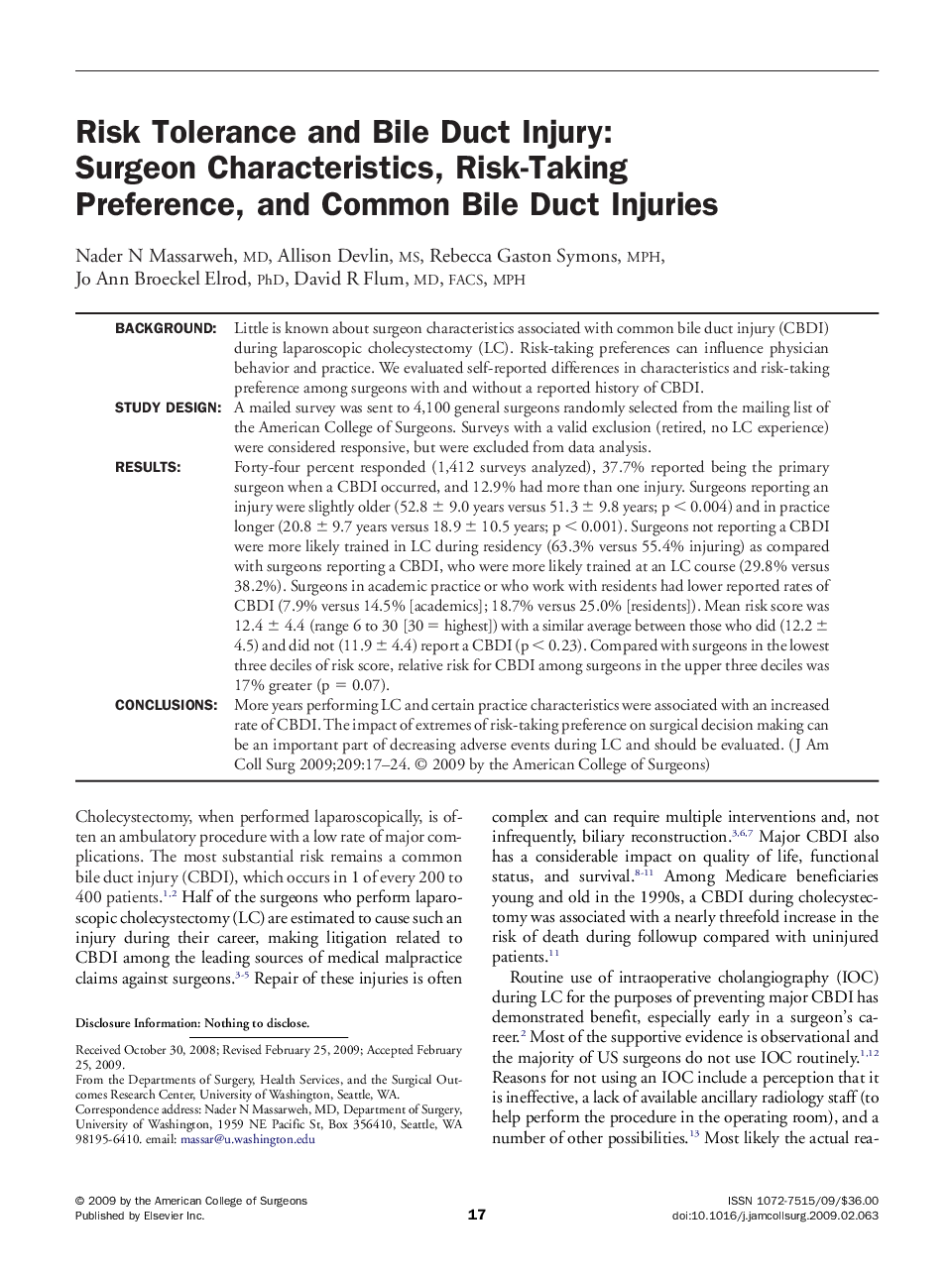| کد مقاله | کد نشریه | سال انتشار | مقاله انگلیسی | نسخه تمام متن |
|---|---|---|---|---|
| 6253152 | 1612297 | 2009 | 8 صفحه PDF | دانلود رایگان |

BackgroundLittle is known about surgeon characteristics associated with common bile duct injury (CBDI) during laparoscopic cholecystectomy (LC). Risk-taking preferences can influence physician behavior and practice. We evaluated self-reported differences in characteristics and risk-taking preference among surgeons with and without a reported history of CBDI.Study DesignA mailed survey was sent to 4,100 general surgeons randomly selected from the mailing list of the American College of Surgeons. Surveys with a valid exclusion (retired, no LC experience) were considered responsive, but were excluded from data analysis.ResultsForty-four percent responded (1,412 surveys analyzed), 37.7% reported being the primary surgeon when a CBDI occurred, and 12.9% had more than one injury. Surgeons reporting an injury were slightly older (52.8 ± 9.0 years versus 51.3 ± 9.8 years; p < 0.004) and in practice longer (20.8 ± 9.7 years versus 18.9 ± 10.5 years; p < 0.001). Surgeons not reporting a CBDI were more likely trained in LC during residency (63.3% versus 55.4% injuring) as compared with surgeons reporting a CBDI, who were more likely trained at an LC course (29.8% versus 38.2%). Surgeons in academic practice or who work with residents had lower reported rates of CBDI (7.9% versus 14.5% [academics]; 18.7% versus 25.0% [residents]). Mean risk score was 12.4 ± 4.4 (range 6 to 30 [30 = highest]) with a similar average between those who did (12.2 ± 4.5) and did not (11.9 ± 4.4) report a CBDI (p < 0.23). Compared with surgeons in the lowest three deciles of risk score, relative risk for CBDI among surgeons in the upper three deciles was 17% greater (p = 0.07).ConclusionsMore years performing LC and certain practice characteristics were associated with an increased rate of CBDI. The impact of extremes of risk-taking preference on surgical decision making can be an important part of decreasing adverse events during LC and should be evaluated.
Journal: Journal of the American College of Surgeons - Volume 209, Issue 1, July 2009, Pages 17-24